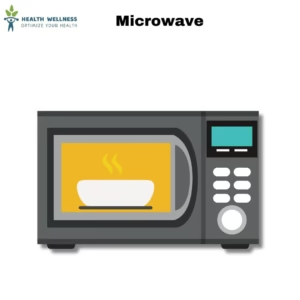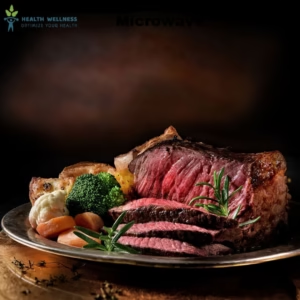Principles of Cooking in Nutrition
Cooking does more than just make food taste better. Heat energy transforms food’s molecular structure and changes its taste, aroma, and nutritional value in fascinating ways.
Most people think about recipes and ingredients. The science behind cooking methods serves a vital role in our nutrition. Heat transfers through conduction, convection, and radiation. Each method affects our food uniquely and determines both its taste and nutrient absorption.
Understanding these cooking methods helps maximize our food’s nutritional benefits. Steaming boosts iron absorption naturally. Proper blanching preserves vegetables’ nutrients and their vibrant colors.
Let’s take a closer look at everything in cooking and how they affect nutrition. This piece will help you make smarter choices about meal preparation to get the best health benefits. The science of cooking awaits!
Understanding the Science of Heat Transfer in Cooking
Heat transfer is the foundation of all cooking methods that changes how food molecules interact and transform. Three main mechanisms – conduction, convection, and radiation – move heat from its source to our food. Each method brings unique effects to food’s nutritional value.
How Conduction Works in Everyday Cooking
Heat moves through direct contact between surfaces from one molecule to another in conduction. A steak on a cast iron skillet shows this perfectly – the pan’s high thermal conductivity creates an even, delicious crust quickly. Different cooking materials transfer heat at varying rates, and metals do this job better than most materials, which makes them the best choice to cook with.
Convection: Moving Heat Through Liquids and Air

Fluid movement distributes heat throughout food in convection, whether through liquid or gas. Fans in convection ovens move hot air around to maintain the same temperature everywhere. Water acts as the medium that moves heat while boiling vegetables. Hot water rises as cooler water sinks, creating a continuous circulation pattern.
Radiation: Cooking Without Direct Contact
Radiation stands apart from conduction and convection because it transfers heat through electromagnetic waves without physical contact between the heat source and food. You can see this at work in broiling, where infrared radiation from heating elements heats food surfaces directly. This method heats surfaces quickly and works great to brown food and create appealing textures.
Microwave Cooking: A Modern Application of Principles

Microwave ovens use electromagnetic waves at specific frequencies (2.4 GHz) to heat food in a unique way. These waves target water molecules and make them vibrate to generate heat through friction. Notwithstanding that, microwaves only reach about 1-1.5 inches into food, and deeper layers heat up through subsequent conduction.
Knowledge of these principles helps make better cooking decisions. To name just one example, tough cuts of meat become tender through braising, which combines direct heat and moist heat to break down connective tissues. Baking relies on both radiation from oven walls and convection through moving air to cook food evenly.
Heat transfer methods significantly affect nutritional outcomes. Dry heat above 300 degrees creates browning reactions that develop distinct aromas and flavors. In stark comparison to this, moist heat cooking keeps nutrients intact without extra fats, especially when you have vegetables and legumes to cook.
How Heat Changes Food Components
Heat dramatically changes food’s molecular structure. These changes affect what we eat, both in terms of nutrition and physical properties.
Protein Coagulation: From Liquid to Solid
Proteins change through coagulation as heat turns their structure from liquid to solid. Egg whites start this change at 60°C, while egg yolks need a bit more heat at 65°C. The muscle fibers in meat lose water and become solid when heated, but too much heat makes the meat tough and chewy.
Starch Gelatinization in Grains and Vegetables
Starch changes between 60-80°C as its granules soak up water and expand. This change happens gradually across 8-15°C rather than suddenly. Each type of starch needs different temperatures to change – wheat starch needs less heat than potato and cassava starches.
Sugar Caramelization and Flavor Development
Sugars change at specific temperatures and create distinct flavors and colors. The process starts at 110°C for fructose, while maltose needs more heat at 180°C. Sugar goes through several phases:
- Breaking down into smaller pieces
- Losing water and forming new structures
- Creating the aromatic compounds that give caramel its signature taste
Fat Melting and Its Role in Cooking
Fats play multiple roles in cooking and affect texture and how we absorb nutrients. They transfer heat quickly to food surfaces without overcooking the inside. Each fat handles heat differently – refined vegetable oils can take up to 280°C of heat, but butter starts smoking at 176°C.
These components work together to make cooking successful. To name just one example, see how fats make baked goods tender by keeping flour from soaking up too much water. Fats also help our bodies absorb vitamins and plant compounds better during stir-frying – research shows that stir-fried carrots give us 6.5 times more beta carotene than raw ones.
Knowing these changes helps us cook better food that’s both tasty and nutritious. Protein changes cannot be reversed, but the right cooking temperature prevents nutrient loss. Starch becomes easier for our bodies to digest after it changes, which makes nutrients more available.
Dry-Heat Cooking Methods and Their Nutritional Impact
Dry-heat cooking methods substantially affect our food’s taste and nutritional value. These techniques use air or fat at temperatures above 100°C. The high heat triggers major changes in food components.
Roasting and Baking: Boosting Flavors While Preserving Nutrients

Food cooked in an oven with dry heat typically needs temperatures between 285 and 400 degrees. Long exposure to heat damages vitamin C and most B-complex vitamins. The process preserves proteins and other nutrients in meat, poultry, and fish effectively. Of course, you need to think over roasting vegetables carefully. Hardier vegetables like beets, onions, potatoes, celery, and green beans resist heat-induced nutrient loss better.
Grilling and Broiling: Managing Cancer-Causing Compounds
The biggest problem with grilling and broiling relates to nutrient retention and potential risks. B vitamins can drop by up to 40%. Two types of carcinogens raise particular concerns:
- Heterocyclic amines (HCAs): Form when proteins react to intense heat
- Polycyclic aromatic hydrocarbons (PAHs): Develop when fat drips onto flames, creating smoke
Here are evidence-based ways to lower these risks:
- Cook smaller portions to reduce exposure time
- Use indirect grilling by placing food away from direct flames
- Flip food frequently to decrease HCA formation
- Marinate meat for at least 30 minutes before grilling
Sautéing and Stir-Frying: Quick Cooking for Nutrient Retention
Sautéing and stir-frying stand out among dry-heat methods. They preserve nutrients through quick cooking at high temperatures. In fact, stir-frying boosts the absorption of fat-soluble vitamins and certain plant compounds. Studies show beta carotene absorption increases 6.5 times in stir-fried carrots compared to raw ones. Blood lycopene levels rose 80% more when people ate tomatoes sautéed in olive oil rather than raw.
Extra virgin olive oil helps retain more nutrients compared to other oils. These methods can reduce vitamin C content in vegetables though. The quickest way to keep nutrients is to avoid overcrowding the pan. Too much food leads to steaming instead of proper sautéing.
Smart application of these cooking principles maximizes flavor development and nutritional benefits. Short cooking times at the right temperatures maintain nutrient levels while creating desired taste and texture. This knowledge helps make informed choices about food preparation that match our nutritional goals.
For Healthy Juices
Moist-Heat Cooking Methods in Nutrition
Moist-heat cooking helps preserve nutrients and makes food easier to digest. Water or steam transfers heat to the food, which changes how our bodies retain and absorb nutrients.
Steaming: The Champion of Nutrient Preservation
Steaming is the best way to keep nutrients in food. Studies show steamed broccoli, spinach, and lettuce lose only 9-15% of their vitamin C. The process actually boosts total glucosinolates by 30% compared to raw broccoli. This works great for cruciferous vegetables because it keeps myrosinase intact – an enzyme that creates cancer-fighting sulforaphane.
Boiling vs. Simmering: Finding the Right Temperature
The right temperature makes a big difference in keeping nutrients. Water boils at 212°F (100°C), creating big bubbles that can damage delicate foods. Simmering is gentler at 185-200°F (85-93°C), with small bubbles that rise slowly from the bottom.
Simmering has clear benefits:
- Flavors blend naturally together
- Food keeps its shape better
- Tough meat becomes tender
Boiling has its drawbacks. The biggest problem is nutrient loss – vegetables can lose up to 50% of their vitamin C. But you can save nutrients by using the cooking water, which keeps 100% of minerals and 70-90% of B vitamins.
Poaching: Gentle Cooking for Delicate Foods
Poaching is the gentlest moist-heat method, with temperatures below 180°F (82°C). It’s perfect for cooking proteins without losing moisture, especially eggs, fish, and tender meat cuts.
Here’s how to get more nutrients when poaching:
- Use wine or lemon juice to help proteins set faster
- Add herbs and garlic for flavor without extra fat
- Keep cooking liquid minimal to save water-soluble nutrients
These moist-heat methods can make food both nutritious and tasty. Steaming works best to keep nutrients, especially in vegetables with water-soluble vitamins. Simmering and poaching are milder options that protect food’s structure and nutrients.
Combination Cooking Methods for Optimal Nutrition
Cooking methods that combine dry and moist heat techniques give you unique advantages in keeping nutrients and developing flavor. These methods work best with tough meat cuts and fibrous vegetables. You can turn them into tender, nutrient-rich dishes.
Braising Tough Cuts for Nutrition and Tenderness
The braising process starts when you sear meat at high temperatures. This triggers the Maillard reaction and creates complex flavor compounds. The meat then cooks slowly in liquid at temperatures between 180-190°F (82-88°C). This two-step process breaks down collagen into gelatin and makes tough cuts tender. Muscle proteins coagulate at temperatures from 105-195°F (40-90°C) during this process.
You can get the most nutritional benefits from braising by:
- Using gentle simmering temperatures to keep nutrients
- Adding just enough liquid to reach halfway up the meat
- Adding aromatic vegetables to improve flavor
Stewing: Extracting Nutrients into the Liquid
Stewing is different from braising because it uses more liquid – food items need to be completely covered. This method excels at breaking down fibrous vegetables and meat together. The result is nutrient-rich broths. Research shows stewing can boost iron content up to 70.7% compared to raw meat.
Stewed meat shows higher levels of essential minerals:
- Phosphorus goes up by 83.3%
- Magnesium levels improve by a lot
- Zinc content shows clear increases
Pressure Cooking: Speed Without Nutrient Loss
Pressure cooking stands out as a great way to preserve nutrients. Studies show it keeps 90-95% of vitamins and minerals. Food cooks at lower temperatures than regular methods while staying efficient under pressure. This technique gives you:
- Better preservation of heat-sensitive nutrients and bioactive compounds
- Better protein and starch digestibility
- Faster cooking times without losing nutritional value
Pressure cooking keeps more nutrients than traditional methods. To name just one example, pressure-cooked broccoli keeps 92% of its vitamin C, while regular steaming only preserves 78%. The method works at temperatures around 250°F (121°C) and preserves nutrients effectively.
Pressure cooking helps disable antinutrients in foods. Studies show beans become easier to digest when pressure-cooked instead of microwaved. This leads to better nutrient absorption. Short cooking times at the right pressure give you the most nutritious results.
Preserving Nutrients Through Smart Cooking Techniques
Smart cooking techniques help preserve nutrients in food. The right methods and careful handling can maximize the nutritional value of your meals.
Minimizing Cooking Time and Water Exposure
Quick cooking helps vegetables retain their nutrients. Steaming broccoli, spinach, and lettuce cuts vitamin C loss to just 9-15%. Less water works better – research shows boiling strips away more nutrients than any other cooking method. Microwaving keeps 97.3% of antioxidants in vegetables of all types.
Using Cooking Liquids in Meals
You can save nutrients by keeping cooking liquids. These liquids contain 100% of minerals and 70-90% of B vitamins. Freezing these nutrient-rich liquids in ice cube trays makes them perfect additions to soups and sauces. Adding these liquids to your dishes helps keep their nutritional value intact.
Proper Food Storage Before and After Cooking
Good storage directly affects how well nutrients stay in food. Your refrigerator’s crisper section keeps vegetables fresh. Nuts need extra care – store them in airtight glass containers. They last 6 months in the refrigerator or a year in the freezer. Cereals stay good for about twelve months in airtight containers kept in dry places.
Cutting Techniques That Preserve Nutrients
Your cutting method affects nutrient content in vegetables. Cutting after cooking works better because it limits nutrient exposure to heat and water. Tearing herbs like basil causes less damage than using a knife. This happens because tears follow cell boundaries instead of breaking through them. Here are some proven tips:
- Pick ceramic or plastic knives to reduce browning – metal knives with iron or copper speed up this process
- Keep your blades sharp to minimize cell damage
- Make larger cuts to reduce nutrient loss from oxidation
These techniques and proper cooking methods help keep nutrients in your meals. The key to preserving nutrients lies in paying attention throughout your food prep process.
Conclusion
The way we understand cooking principles can revolutionize our meal preparation methods. Smart heat transfer techniques help preserve nutrients while creating delicious dishes. Scientific research proves each cooking method offers unique advantages – steaming keeps nutrients intact, while stir-frying helps our bodies absorb certain compounds better.
The right cooking method for each ingredient leads to better results. Quick cooking methods like steaming work best for tender vegetables. Tough meat cuts need techniques like braising or pressure cooking to become tender. Simple steps like using less water and keeping cooking liquids will help maintain valuable nutrients effectively.
Cooking methods and nutrition share a deep connection. Modern understanding shows cooking as a scientific process that changes our food’s molecular structure and nutritional content. This knowledge helps us make smarter choices about meal preparation.
Science and practicality must work together in the kitchen. The right temperature, timing, and technique will give a meal its maximum nutritional value. These elements combine to create appetizing dishes that nourish our bodies completely.
FAQs
Q1. What are the key principles of cooking for optimal nutrition? The key principles include choosing appropriate cooking methods, minimizing cooking time and water exposure, using cooking liquids in meals, proper food storage, and employing cutting techniques that preserve nutrients. Methods like steaming, stir-frying, and pressure cooking can help retain more nutrients compared to boiling or prolonged cooking.
Q2. How does heat transfer affect food during cooking? Heat transfer occurs through conduction, convection, and radiation, each affecting food differently. These processes change the molecular structure of food, altering its taste, texture, and nutritional value. For example, protein coagulation occurs at specific temperatures, while starch gelatinization happens between 60-80°C, improving digestibility.
Q3. Which cooking method is best for preserving nutrients in vegetables? Steaming is generally considered the best method for preserving nutrients in vegetables. It causes minimal nutrient loss, with studies showing that steamed broccoli, spinach, and lettuce lose only 9-15% of their vitamin C content. Steaming can even increase the availability of certain compounds, like glucosinolates in broccoli.
Q4. How can I minimize nutrient loss when cooking meat? To minimize nutrient loss when cooking meat, consider using methods like braising or pressure cooking. These techniques can increase the concentration of certain minerals like iron, phosphorus, and zinc. Additionally, cooking at lower temperatures for shorter periods can help retain more nutrients.
Q5. Are there any cooking techniques that can enhance nutrient absorption? Yes, certain cooking techniques can enhance nutrient absorption. For instance, stir-frying vegetables in a small amount of oil can increase the absorption of fat-soluble vitamins and certain plant compounds. Studies have shown that beta-carotene absorption from stir-fried carrots is 6.5 times greater than from raw carrots.

